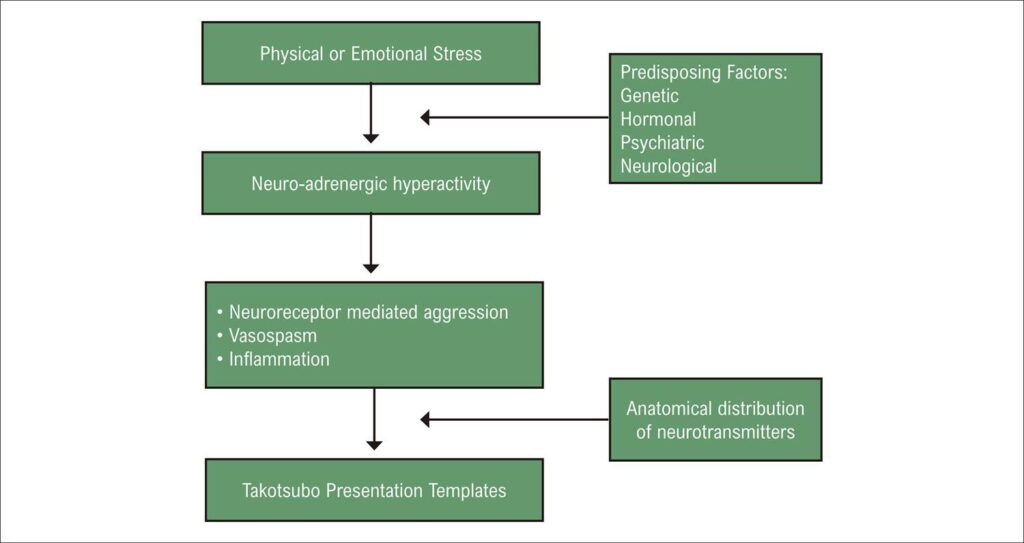ABC Heart Fail Cardiomyop 2023; 3(1): e20230041
Stress Cardiomyopathy (Takotsubo)
Introduction
Takotsubo Cardiomyopathy (CT), also known as stress-induced cardiomyopathy, is a reversible syndrome that usually presents as an acute coronary syndrome, especially in postmenopausal women. The pathophysiology involves multiple factors, including coronary vasospasm, microcirculation dysfunction, catecholaminergic aggression, and sympathetic hyperactivity. The diagnosis of the classic presentation is the presence of a segmental alteration in the form of ballooning or dyskinesia in the antero-septo-apical region of the left ventricle, associated with hyperdynamia of the basal segments, in the absence of obstructive coronary disease that justifies this alteration in contraction. Initially, it was believed that CT was a self-limiting condition with a good prognosis; however, it is currently recognized as a pathology with a high rate of complications and high morbidity and mortality in the short and long term. Even though the first description was made more than 30 years ago, in 1990, by Sato, the etiology and pathophysiology are still not fully defined, and we still do not have an international guideline for standardizing diagnosis and treatment.
[…]
601


